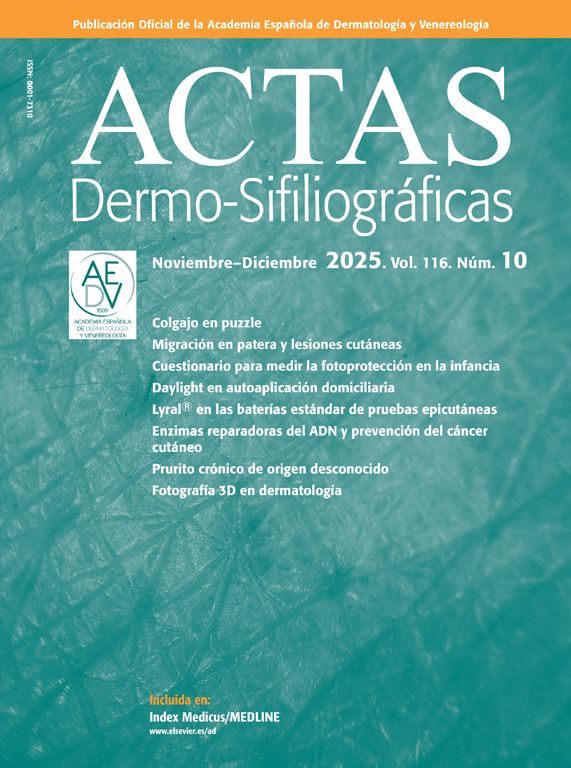Piebaldism is a rare, autosomal dominant disorder with an incidence rate of <1 for every 20,000 individuals. Although it is most often caused by a pathogenic variant in the KIT gene, variants in the SNAI2 gene have also been reported.
These genetic variants lead to a defect in melanocyte migration from the neural crest. Clinically, it presents with a distinctive white forelock (poliosis), typically in the anterior medial hairline (Fig. 1A), and achromic patches (areas of absent pigment). These patches can have islands of normal or darker-than-normal skin, particularly on the extremities (elbows and knees) (Fig. 1B) and the central anterior chest. Lesions are present from birth and do not progress over time.
Differential diagnosis includes vitiligo, nevus anemicus, achromic nevus, tuberous sclerosis, hypomelanosis of Ito, and Waardenburg syndrome, among others.
If piebaldism is suspected, a thorough physical examination is essential to rule out other syndromes with extracutaneous signs, such as Waardenburg syndrome, which is accompanied by sensorineural hearing loss and heterochromia of the iris.
Treatments for piebaldism primarily aim to improve the cosmetic appearance. Additionally, patients should be instructed on proper photoprotection.





